Spring Fly Fishing Tips From California’s Fly Fishing Guides
Fly Fishing In Spring Means A Lot Of Uncertainty. Top Fly Fishing Guides Tell You How To Cope.
It’s not just that spring fishing is excellent; it’s that it follows on the heels of winter, which for most fishermen feels way too long.
Success in the spring involves juggling things like rising rivers, uncertain spring hatches, warming waters, the “you should have been here yesterday” days — and all the usual scheduling hassles faced by folks who work for a living.
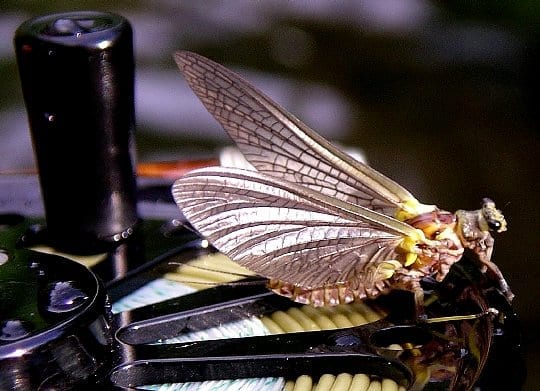
After a steady winter diet of tiny bugs, spring means big bugs for trout and fishermen alike
To help our readers succeed, we’ve assembled a Spring Fishing Tips of the Guides article, which includes a couple of tips you probably weren’t expecting.
The snowpack in the southern Sierra is less than half of normal, while the snowpack in the northern end of the state has crept up to near-normal levels, so we can’t even make sweeping generalizations about runoff events.
What we can do is offer you the expertise of some of California’s best fly fishing guides.
Craig Nielsen: Shasta Trout
The Right Place, The Right Time…
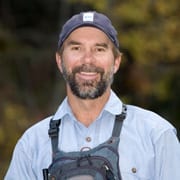
Craig Nielsen
Fishing in spring can also sometimes be a complete bust as large Pacific storms can create unfishable wind, and runoff that muddies and floods rivers. In spring — more than any other season — it is critical to keep in mind the wise old adage of being in the right place at the right time.
If it is windy, canyon freestones such as the Upper Sac, McCloud or Pit Rivers — where casting is not at a premium — can offer relief. If the flows on freestones are high and muddy it’s best to head to a tailwater such as the Klamath River or Lower Sac or perhaps a spring creek such as Fall River or Hat Creek.
Above all, be ready for good things to happen.
I recall one of our best spring trips ever during two stormy days in May on Hat Creek. We enjoyed fishing PMD dries to large, hungry Rainbows gorging on a blanket hatch in the Powerhouse Riffle. There were no other anglers in sight.
The third day dawned bright and clear, the crowd appeared, the hatch was gone and nary a fish was caught. Members of that trip gained new appreciation for being in the right place at the right time.
Craig Nielsen, Shasta Trout
Craig Nielsen is the owner and operator of Shasta Trout. A Northern California native, he has been chasing trout with a fly rod for 49 years and guiding professionally since 1992. Having fished all across the west, B.C. and Alaska he especially appreciates the angling diversity Mt. Shasta offers. A certified casting instructor, he taught at Mel Krieger’s school and was one of the first authors writing about switch rods. Craig has been a featured guide for Fish First, Flywater Travel, The Ashland Flyshop, Leland, Ted Fay, The Clearwater House and The Fly Shop.
Dave Neal: Mammoth Reel Guides
Want Spring Success? Carry A Thermometer
My tip for the spring season trout angler? Carry a thermometer.
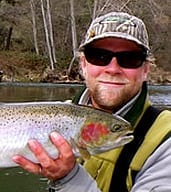
Dave Neal, Mammoth Reel Adventures
In the Eastern Sierra, water temperatures in the 40’s usually mean you’ll experience the usual suspects of midges and Blue Winged Olive mayflies. Water temps in the 50’s usually mean you’ll see bugs like the first wave of caddis, little yellow stones, pmd’s and craneflies.
As the water temps gradually increase, so does a trout’s metabolism. In a symbiotic relationship, trout get more active as water climbs toward the 60-degree mark while having many new and varied bug life offerings to consume. For fly fishermen, this creates what I’ll suggest is a terrific opportunity.
We are fortunate to enjoy several productive tailwaters and spring creeks in the Eastern Sierra. These types of rivers usually create consistent water temps that increase gradually over a period of time leading to somewhat predictable hatch events. By contrast, our freestone rivers and streams are still very cold this time of year as the high country snow begins to melt and runoff.
My advice? Fish the tailwaters and spring creeks in the spring season, while focusing on the freestone streams during the summer months.
Dave Neal, Reel Mammoth Adventures Guide Service
Dave Neal is the owner/operator of Reel Mammoth Adventures guide service, located in the Eastern Sierra Region of Ca. As a full-time, year-round guide in the mountains, Dave is no stranger to the minor discomforts of frozen rod guides, numb fingers and a chronic runny nose.
Hogan Brown:
Look To Tailwaters For Stable Fishing
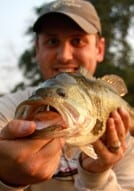
Hogan Brown
While tailwaters provide the most reliable and stable flows during the spring, late spring storms and runoff do affect the fishing. Hatches are abundant on most tail waters during the spring months, but off-color water and high flows can make spotting small PMDs, caddis, and other bugs difficult for the fish.
Typically, when the water is high and/or off-color during the spring, I fish two and three fly nymph rigs; I pair an “off color water pattern” or “large attractor pattern” with a more accurate “match the hatch” fly.
My favorite “off color water patterns” are San Juan worms in various colors, bright colored glo bugs, dark colored rubber legs, and larger attractor patterns like Prince nymphs. I will usually drop off these flies a PMD nymph or small spring caddis pattern to match the main food sources of the spring.
Make sure to fish plenty of split shot to get the rig down on the bottom and fish likely holding water meticulously as fish will not move as far to eat a fly in high water and they can not see the flies as well if the water is off color.
Hogan Brown, Hogan Brown Fly Fishing
Hogan Brown literally grew up on the banks of the North Fork and Lower Yuba Rivers, and has chased trout and steelhead in pretty much every western state (and province) where they can be found. A contract fly tyer for Idylwilde Flies, he has contributed 24 unique patterns to their catalog. He is a longtime guide on Northern California’s rivers.
Ralph Cutter: The Fly Fishing School
Things Are Changing Fast, So Keep It Simple
Spring is the time when aquatic insects go through rapid growth spurts. A size 18 mayfly nymph this week might be a size 14 in two weeks. A light tan nymph today may be chestnut brown by the end of next week. Spring is the time when there are the most nymphs in the water (they haven’t hatched yet) and it is also the time when many bugs will be moving from the deep sheltering zones where they spent the winter into the shallows where algae is most abundant.
What does all this mean to you? It means keep it simple. The fish are seeing large numbers of nymphs in all sizes, shapes and colors. It is pretty hard to find a pattern that doesn’t imitate at least a part of the menu. Fish with something generic.
In that sweet transition between winter and early summer a #12 pheasant tail might be all the fly selection you will need.
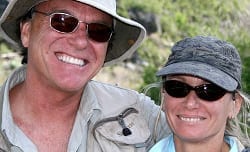
Ralph and Lisa Cutter, California School of Fly Fishing
Ralph Cutter, California Fly Fishing School
Ralph Cutter — along with his wife Lisa — has owned and operated the California School of Flyfishing since 1981. Their classes are held in Nevada City and Truckee. Ralph is a past Cal-Trout board member, Regional Manager, and Streamkeeper for the East Carson, Truckee, and Upper Yuba Rivers. He’s also published several books, including the convention-challenging Fish Food, where he donned a mask and flippers to see what fish eat — and how.





1 Comment
Halo, Am a fly tier based here in Kenya. Am writing to ask if we can do
some fishing flies business at wholesale prices.I’m specialized in
tying trout flies,saltwater,tungsten nymphs,salmons,large lures such
as pikes,bass bugs,muskies and many more also do custom flies.If you enroll me as your
supplier i will maintain a good working relationship with you.A above
all i will guarantee you high quality lures.
Waiting to hear from you soon.
regards
one dozen nymphs 2.3 u$d
one dozen dries 2.5 u$d
one dozen streamers 2.7 u$d
one dozen saltwater 6.5 u$d
one dozen salmon 6.5 u$d
one dozen bass bug 7.5 u$d
wet per dozen 2.3 u$d
Waiting to hear from you soon.
regards!